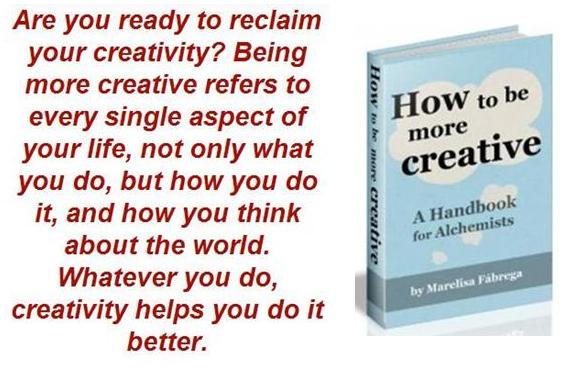
The best way to solve a problem is to eliminate, or resolve, its root cause.
There’s a huge difference between hacking away at the branches of a problem, and striking at the root. When most people have a problem, they limit themselves to addressing the immediate and obvious causes of the problem, which leads to the implementation of superficial solutions. Taking this approach won’t provide you with a long-term solution to whatever problem you may be facing.
 When you don’t eliminate the root cause of a problem, the problem will keep recurring. Fortunately, there are several different tools you can use for identifying the root cause of any problem. One of the best of these is called the 5 Whys. It’s a simple, but powerful tool.
When you don’t eliminate the root cause of a problem, the problem will keep recurring. Fortunately, there are several different tools you can use for identifying the root cause of any problem. One of the best of these is called the 5 Whys. It’s a simple, but powerful tool.
Below you’ll find an explanation of the 5 Whys, and you’ll discover how you can start applying this approach to begin identifying the root cause of any problem you may be having.
The 5 Whys In a Nutshell
Sakichi Toyoda, known as “the father of the Japanese industrial revolution”, was the founder of Toyota Industries. He developed the 5 Whys technique in the 1930s. This technique became a critical component of the problem solving training given to Toyota employees.
Here’s a quote about the 5 Whys from the book “The Lean Startup”, by Eric Ries:
“The Toyota production system has been built on the practice and evolution of this scientific approach. By asking and answering ‘why’ five times, we can get to the real cause of the problem, which is often hidden behind more obvious symptoms.”
In addition, Taiichi Ohno, the architect of the Toyota Production System in the 1950s, had the following to say about the 5 Whys method in his book, “Toyota Production System: Beyond Large-Scale Production”: “. . . by repeating why five times, the nature of the problem as well as its solution becomes clear.”
Although the 5 Whys is a technique from lean manufacturing, it can be applied to almost any problem you may be having at work or in your daily life. The technique consists of the following:
- Start by identifying a problem that you’re having.
- Ask “why” that problem is occurring. Make sure that your answer is grounded in fact. You should be able to state the proof or evidence that you’re relying on for your assertion of the reason why the problem is occurring.
- Once you have an answer, ask “why” again.
- Continue the process until you reach the root cause of the problem. Usually, you’ll be able to identify the root cause of a problem after asking “why” five times.
- Once you’ve identified the root cause of the problem, come up with a counter-measure that prevents it from recurring.
Three Examples of the 5Whys
Here’s an example of the 5 whys method from The UK’s National Health Service Improvement Network:
- Problem: The patient was late getting to the Operating Room.
- First “Why?”: There was a long wait for the trolley.
- Second “Why?”: A replacement trolley had to be found.
- Third “Why?”: The original trolley’s safety rail was worn and it broke off.
- Fourth “Why?”: It was not regularly checked for wear.
- Fifth “Why?”: The hospital doesn’t have an equipment maintenance schedule. (This is the root cause of the problem.)
- Solution: Fix the root cause of the problem by implementing an equipment maintenance schedule.
Here’s an example involving an individual who’s late for work (from Wikipedia):
- Problem: You were driving to work and your car broke down.
- First “Why?”: The battery died.
- Second “Why?”: The alternator stopped functioning.
- Third “Why?”: The alternator belt broke.
- Fourth “Why?”: The alternator belt was well beyond its useful service life and not been replaced.
- Fifth “Why?”: The vehicle was not maintained according to the recommended service schedule. (This is the root cause of the problem.)
- Solution: Fix the root cause of the problem by implementing a maintenance schedule for the vehicle in accordance with the recommended service schedule.
Here’s a third example:
- Problem: You got caught speeding.
- First “Why?”: You were late for work.
- Second “Why?”: You got up late.
- Third “Why?”: When the alarm rang you were too tired to get up and you hit the snooze button.
- Fourth “Why?”: You went to sleep late.
- Fifth “Why?”: You were watching TV past midnight. (This is the root cause of the problem.)
- Solution: Fix the root cause of the problem by setting a rule stating that you will turn the TV off at 10:30 p.m. every night.
A More Complex 5 Whys Analysis
The simplest application of “the 5 Whys” approach is the one illustrated above in the examples of the trolley, the vehicle, and the speeding ticket. However, the approach can also be used for more complex problems. For example, Paul Williams–founder of “The Idea Sandbox”–suggests the example of a lemonade stand.
Suppose that you have a lemonade stand that’s not doing very well. Here’s your problem: sales at the lemonade stand are low. However, when you ask “why” you might come up with five different answers, instead of just one. Here are the five answers you could come up with:
- Sales are low because my lemonade stand is not very visible.
- Sales are low because people aren’t interested in premium lemonade.
- Sales are low because my competitors sell cheaper lemonade.
- Sales are low because my stand is in a poor location.
- Sales are low because people would rather drink coconut water or energy drinks to quench their thirst, instead of drinking lemonade.
Then, you would conduct a “5 whys analysis” for each of the five causes of poor sales that you came up with. You could also ask “why” more than once for each sub-issue. As Williams says, “‘Why’ is a magic word that will break a problem down into smaller, more workable chunks.”
Conclusion
Instead of putting a band-aid on your problems, use the 5 Whys approach explained above to identify the root cause of any problem you may be having. Then, take steps to strike at the root of the problem. That way, you’ll prevent the problem from recurring–and possibly getting bigger and more complex–in the future.
Live your best life by fixing your problems once and for all by getting at the root cause of your problems with the 5 Whys technique.




Related Posts:
- Stuck for An Idea? Try SCAMPER
- How Thinking In Reverse Can Make You More Creative
- How to Change Your Life
- How to Conduct a Life Audit
Did you enjoy this article? Subscribe to “Daring to Live Fully” by RSS or by email, and get free updates.





 Marelisa Fabrega is a lawyer and entrepreneur. She holds a Bachelor of Science in Business Administration from Georgetown University in Washington, D.C., as well as a Juris Doctor from the Georgetown University Law Center. You can learn more about her
Marelisa Fabrega is a lawyer and entrepreneur. She holds a Bachelor of Science in Business Administration from Georgetown University in Washington, D.C., as well as a Juris Doctor from the Georgetown University Law Center. You can learn more about her 





